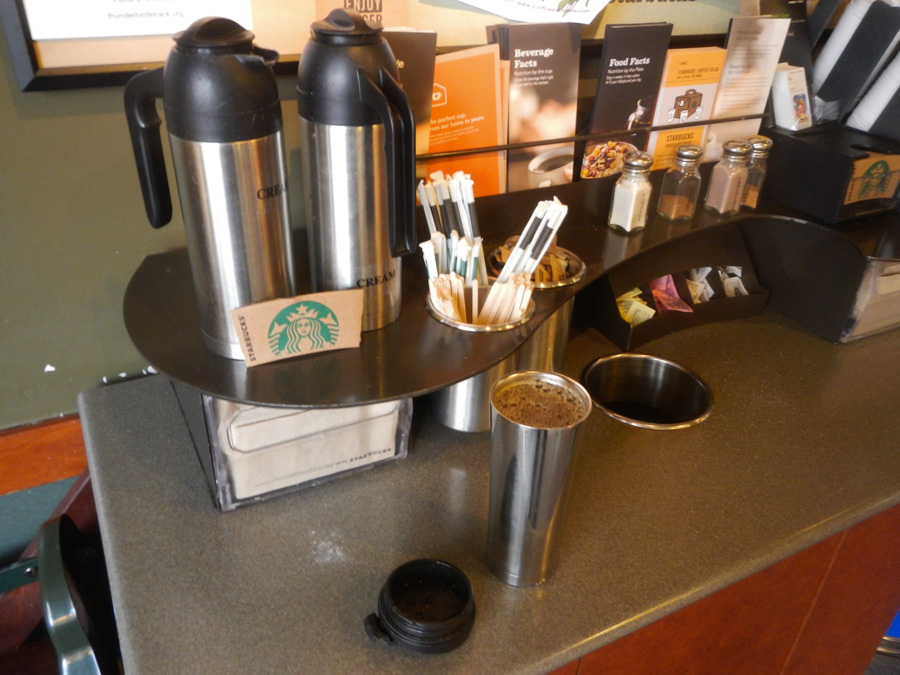Twenty years ago, Starbucks started expanding north into Canada and Vancouver was one of the first cities to see a proliferation of Starbucks stores. At the time, I was looking for a coffee store where there was skim milk (non fat milk for my non-Canadian friends) on the counter. I was tired of coffee shops where I had to constantly ask for cold skim milk for my coffee. Fortunately, Starbucks included skim milk on the counter in every single one of their stores. For me, this was the key differentiator that made me a Starbucks customer for the last 20 years.
The last two weeks, skim milk has been disappearing from Vancouver Starbucks stores. Every time I get a Starbucks coffee, which is usually more than once every day, I have to ask for skim milk so that I can add it to my coffee. When I do, a four litre jug is retrieved from the back and put on top of the counter for me to open and pour into my coffee. Not only has Starbucks taken away the key differentiator that made me become a customer in the first place, they make the experience of getting what I want unpleasant.
When I ask, I’m told one of two things:
- We were told to get rid of all skim milk containers, or
- Skim milk was going bad and being wasted.
Here in Vancouver, a four litre container of milk costs less than $5.00 (Canadian). Starbucks would get it for less than the retail price. Let’s say that they “waste” two four litre containers a day—$10 (Canadian) a day. While I’m sure that when multiplied by all the stores in Vancouver there is a some numerical number that impacts the profits of Starbucks (the accounting argument).
Thinking as a brand manager, I have to wonder:
- What’s the lifetime cost of losing me as a customer? Maybe I’m unique and having skim milk on the bar isn’t a differentiator for many, but how much risk do you want to take?
- When you remove part of your product offering, people are more likely to look seriously at a competitor, when previously they wouldn’t have even considered looking at all. What’s the brand cost of people looking elsewhere?
- If spoiled skim milk is the challenge, what other ways could you prevent it spoiling without removing it from the counter? What about cooling the carafes with ice water before filling them with either cream or milk? What about better carafes that stay cool longer?
- For loyal customers like me, what’s the brand cost of the inconsistent messaging that I receive about the change?
Product managers struggle with issues like this all the time and not just in coffee shops. When adding new features to software products, it is tempting to never remove an existing feature. When you do this over time, you can end up creating a product that is really hard to use. As a product and brand manager, you have to think through the whole customer experience and then use clever ways to preserve the existing customer experience and loyalty, while still finding ways to move forward and save costs.
These are hard choices, but I believe that first and foremost you have to keep your customers informed, starting with a consistent message from every employee of every store. I was completely surprised by this change and Starbucks has done nothing to keep me in the loop or engaged as a customer while this change is rolled out. And for the record—if saving $10/day in spoiled skim milk is really the reason you are doing it, it’s an awfully dumb reason to risk your customer’s loyalty.
I’m now seriously looking to see what other coffee shops in Vancouver have good coffee and skim milk on the bar.




